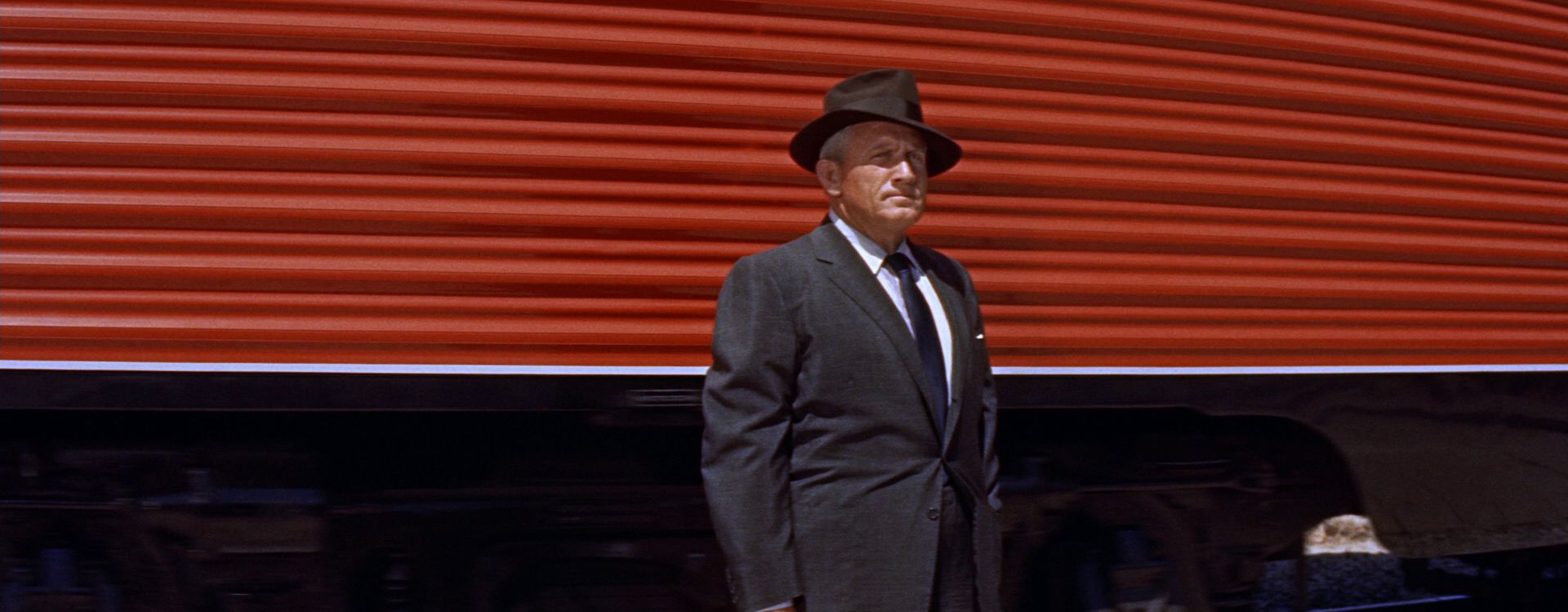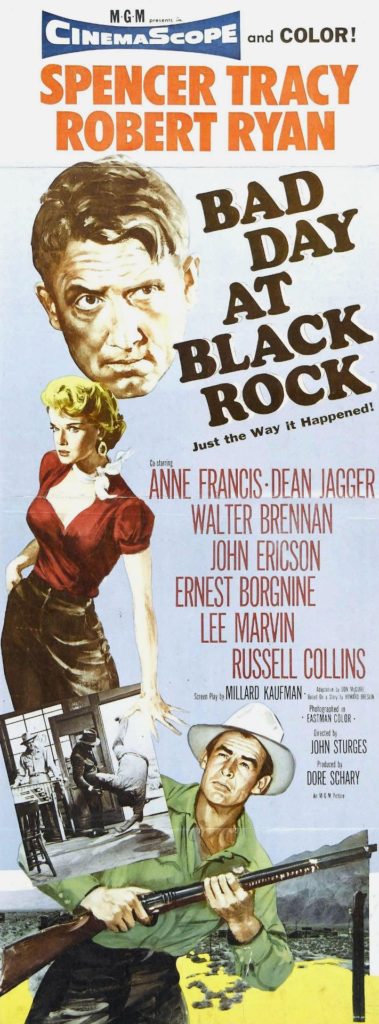
It’s been four years since the streamliner last stopped at Black Rock, a tiny little no-horse town in the middle of the California desert, so it doesn’t seem so odd that the residents wouldn’t know what to make of John J. Macreedy (Spencer Tracy), their first visitor since right about the beginning of the war. It doesn’t take long for Macreedy to realize that the nervous looks and strange behavior are more than just small-town snobbery. A few run-ins with town honcho-slash-bad-guy Reno Smith (Robert Ryan), mechanic Liz Wirth (Anne Francis), world-weary Doc Velie (Walter Brennan), alcoholic sheriff Tim Horn (Dean Jagger), and assorted henchmen-shaped dudes (Ernest Borgnine, Lee Marvin) clue Macreedy into the fact that they want him gone… gone as in dead, not just on the next train out of town. Macreedy’s unexpected visit has brought the town’s horrifying past into the present, and they will do anything to put it back.
John Sturges’ Bad Day at Black Rock (1955), a post-war crime drama and western, was one of the first films to make an unambiguous statement about the internment of Japanese-Americans during World War II. Other films like Daisy Kenyon (1947) had attempted to approach the issue, but the Breen Office always objected to anything more than a passing reference. By the mid-1950s, Breen was gone and the Hays Code was losing its power (see 1951’s The Moon is Blue, among others), and filmmakers like Sturges were taking advantage of this new artistic freedom.
Bad Day at Black Rock is a lot of things, including a gorgeous film. Warner Archive has recently released Bad Day on MOD Blu-ray; per TCM, this was the first film MGM ever shot in CinemaScope, and the Warner release is the best this film has ever looked on home video. That blurriness you get with films originally shot in CinemaScope is almost nonexistent here, as is the walleye effect that happens during a pan. The colors are rich and the sound, including Andre Previn’s fantastic score, is top notch.
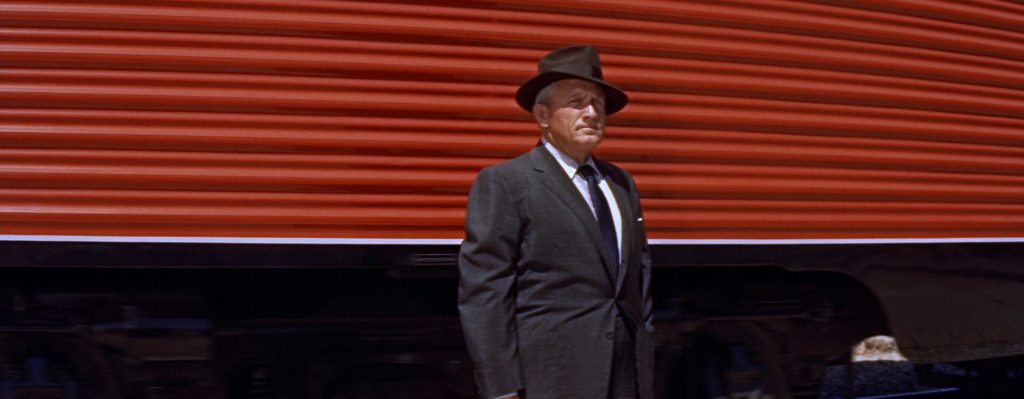
Bad Day is mostly known as being an allegory for McCarthyism as well as a statement against the internment of Japanese-Americans during WWII, but it’s also a taut thriller based on good old-fashioned persecution fantasy, especially considering the quiet, amiable Macreedy is such a cipher that the bad guys can’t dig up even one detail on him that he doesn’t tell them himself. It’s also one of the quintessential examples of the overlap between film noir and western genres that produced such great films in the 1950s; listen to the “patriotic drunk” speech and tell me that couldn’t be picked up and plonked right down into a late-40s black and white noir starring Robert Mitchum.
As good as Spencer Tracy is in Bad Day — and I maintain it’s one of his finest performances on film — he is arguably too old for the part, though that seems to have been intentional… or at least intentional once major character revisions were made to add “depth” to the role.
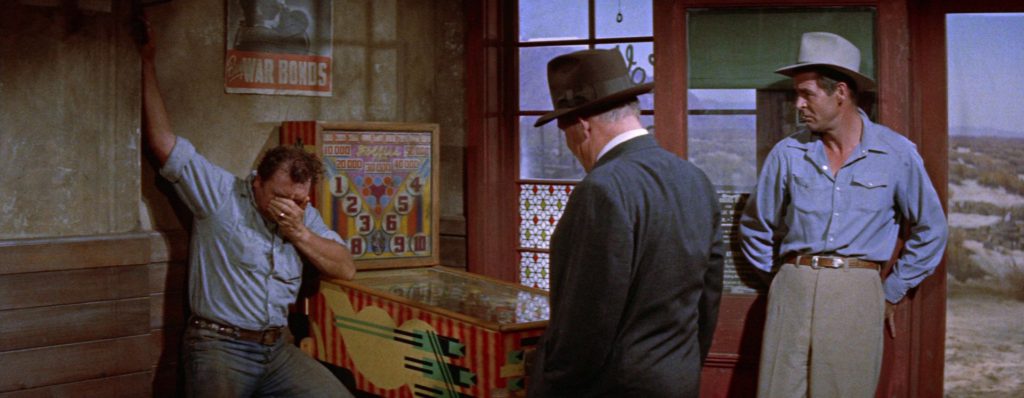
A henchman learns the hard way that the elderly one-armed stranger who just rode into town knows Judo. That’s actually Tracy’s stunt double, who is an almost perfect match for Tracy. Also note the fantastic pinball machine; it’s a Follies of 1940 woodrail machine, and can apparently also be seen in a Laurel & Hardy film.
The titular day takes place in 1945, if the dialogue and license plates are telling the truth, meaning Macreedy would have been in his late 40s while he served in WWII. For the most part, the only older soldiers serving in the war were high-ranking career officers. (In the original short story, “Bad Day at Hondo,” Macreedy was a private investigator, but even with this vocational change, critics over the years have frequently noted Macreedy’s similarities to Dashiell Hammett’s Continental Op.) We have no idea what rank Macreedy was but his age gives a nice clue as to the circumstances he finds himself in, a clue that comes into play late in the film when a few sentences of exposition finally flesh out his motivations.
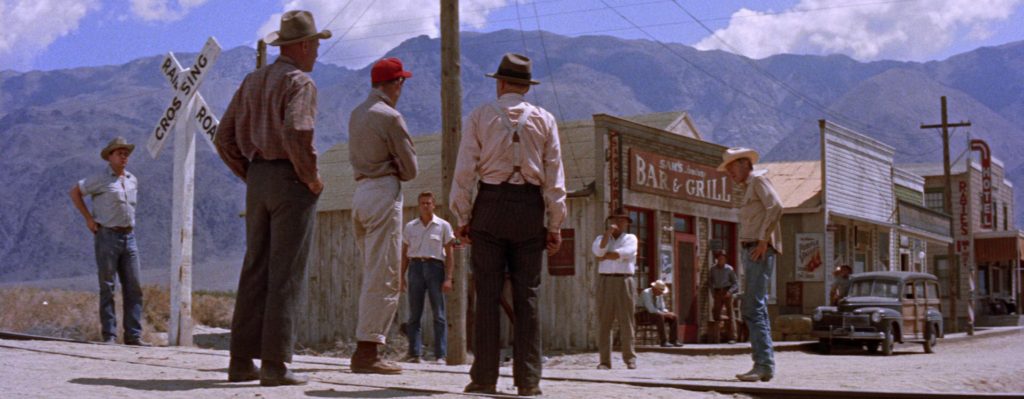
Per my good pal W.B. Kelso at Micro-Brewed Reviews, producer Dore Schary had been with RKO until just a few years prior to working on Bad Day, and had only moved to MGM after RKO went under. One of the projects he brought with him to MGM was Battleground, a film the studio was reportedly not excited about, but which garnered them some much-needed post-war success; Battleground has also just been released by Warner Archive on Blu-ray.
Years ago, TCM would show little featurettes between films where modern actors spoke about classic actors they admire, and Spencer Tracy’s short subject was narrated by Kevin Costner. The scene in Bad Day where Robert Ryan is questioning Tracy at the gas station was the one Costner focused on, claiming that it proved how great Tracy was at acting, because Ryan had to walk around looking agitated to try to steal the scene from Tracy, while Tracy could merely sit there and steal the scene without trying. It’s an astonishing claim, because this scene — one of my favorites of all time — is an amazing piece of work in large part because of both actors’ generosity when performing; no one was stealing any scenes. Ryan’s character is agitated. He is a man who possesses exactly zero chill. But Ryan can’t go into arms-waving-AirDancer mode physically because Tracy has to stay seated (perhaps because of his own health, or because the scene called for it, or a little bit of both). Ryan uses more subtle cues to indicate his emotional state, and Tracy reacts appropriately; the same happens vice versa and a wonderful symbiosis is reached.
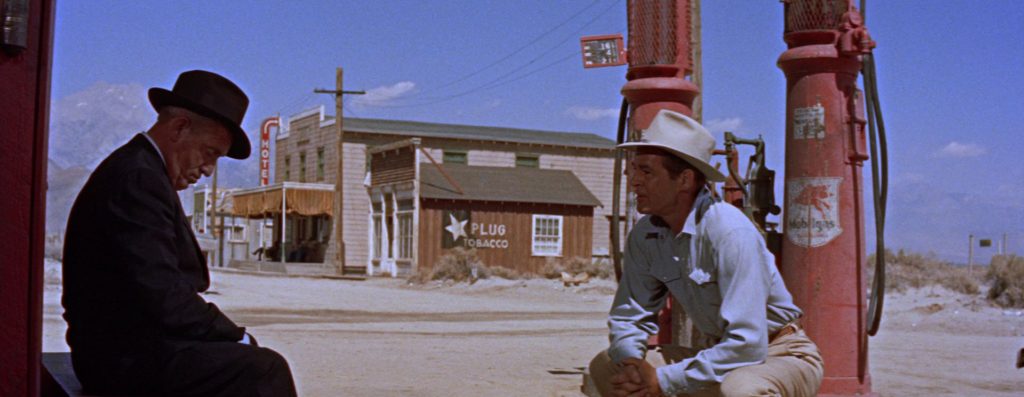
Besides all that, Tracy himself would probably not agree with Costner’s assessment: “Bob is so good in this part, he scares the hell out of me,” he told Sturges during filming.
There is not a single mediocre performance in this film, let alone a bad one, and even though I know I can’t be the only one who wants to whap the naturally hammy Walter Brennan over the head with a rolled-up newspaper, he gives a solid perf. The performances, the hard-boiled economic dialogue, the expansive desert landscapes in gorgeous CinemaScope, and the timeless themes make Bad Day at Black Rock one of the most important American films to come out of the 1950s.
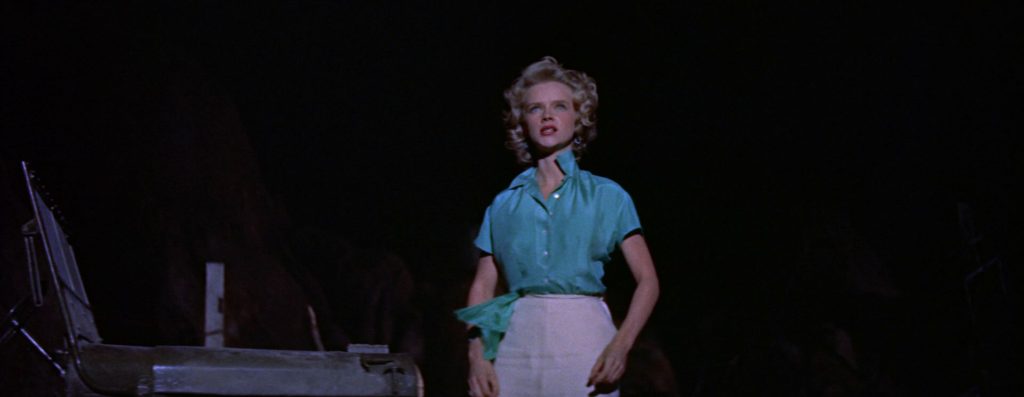
Bad Day at Black Rock is now available from Warner Archive in a made-on-demand Blu-ray, and includes a commentary track by film historian Dana Polan and the original theatrical trailer.

